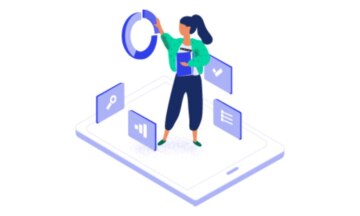Using Webinars to Build Experiences Everywhere

In early 2018, GDPR, the European Union’s data privacy regulation, went into effect, fundamentally changing how marketers approach European Union audiences both in the region and abroad. The fundamental change is this: marketers must market based on interest and intent, rather than spamming audiences with the same old invasive tactics, or face hefty fines.
GDPR is a direct response to spam, spam phone calls, aggressive social media ads and other tactics where marketers blast messages without bothering to learn what target audiences actually want to hear. It’s a law forcing marketers to do what they should’ve been doing in the first place: evolving the customer experience — from lead to prospect to advocacy — to match with the expectations of modern audiences.
Marketers need to take a step back to learn what audiences want to actually hear. To get this critical information and act on it, marketers need to provide permission-based interactive, unique experiences at each touchpoint of the buyer’s journey. A robust webinar ecosystem can help manage each aspect while gathering the data needed to improve the buyer’s journey.
A Webinar Ecosystem Helps Build Branded, Interactive Experiences
Let’s start with the obvious: webinars enable marketers to create branded, interactive events that put audiences in control of their own experience — from downloading resources and asking questions to participating in polls and watching events on their own time.
That’s good. It’s no longer acceptable to ask attendees to stare at a static screen for up to an hour without giving them a chance to engage. Interactive tools help to start a conversation and enable attendees to flag how interested they are in your services, where on the buyer’s journey and what, exactly, they need from your organization. In fact, interactivity in webinars is so important that, according to our 2019 Webinar Benchmarks Report nearly 70% of ON24 webinar producers say they build webinars with interactivity in mind, such as allowing for breaks for attendees to respond to polls or taking the time to respond to chat questions during a live broadcast.
By providing interactive webinars, organizations can boost engagement in both digital and in-person experiences. That interactivity during a webinar, for example, can influence what a sales representative shows to a prospect in the field, thereby accelerating the buyer’s journey.
A Webinar Ecosystem Creates On-demand Content Hubs
Netflix introduced binging to the world a few short years ago by making it easier to watch TV. All you have to do is turn your favorite program on and let each episode play. But the same binge-consumption habits also work when we watch professional content. According to our 2019 Webinar Benchmarks Report, 36% of all audiences only watch webinars on-demand. The average viewing time for always-on webinars, too, is 47 minutes, suggesting audiences are all-in on watching on-demand.
With such a strong push for on-demand content, it makes sense for webinar practitioners to consolidate and organize their events in a programmatic manner. For example, webinar practitioners can bundle up a series of webinars, like technical deep dives on a product or service, and make that on-demand series available for easy consumption through a content hub where audiences can access, engage and binge anytime, anywhere.
But content hubs, like ON24’s Engagement Hub, isn’t just about binging webinars. Marketers can publish, curate and share all relevant content — like e-books, reports and guides — to create in-depth tracks for virtually any audience at any stage of the buyer’s journey. Most importantly, these hubs can collect data and help you to analyze engagement with always-on content, allowing you to better understand content performance and prioritize high-traffic pieces for updates and distribution.
A Webinar Ecosystem Powers Bespoke, Personalized Landing Pages
Remember the first time an unknown vendor sent you an automated email with your name on it? Or, after viewing a product on Amazon, seeing on your Facebook feed? Well, those surprises in marketing are now the norm. And, as consumers, we’re becoming accustomed to seeing these heavily targeted, personalized experiences.
Now, we’re seeing the same shift to personalization in B2B marketing. According to a CEB survey, stakeholders who believe content is tailored to their specific needs were 40% more willing to buy from that supplier. The results are so compelling that 95% of CMOs are prioritizing “better-tailored content,” according to the same study.
Here, a strong webinar ecosystem can truly shine — and do so across the entire customer lifecycle. Webinars and webinar-affiliated content can easily power landing pages targeted at a specific account, vertical or stage of the buyer’s journey. In fact, you can use this content to power a combination of all of the above. By using targeted landing pages, you can create a better onboarding experience and scale your engagement programs by developing a series of experiences timed to the customer lifecycle. You can even clone and customize pages for unique accounts, helping your customers see the experience is uniquely theirs.
Marketers need to improve the overall brand experience across the entire customer lifecycle and actually engage with audiences. A robust webinar ecosystem helps marketers to stop trying to generate demand and start being in demand with content experiences that engage audiences everywhere.
